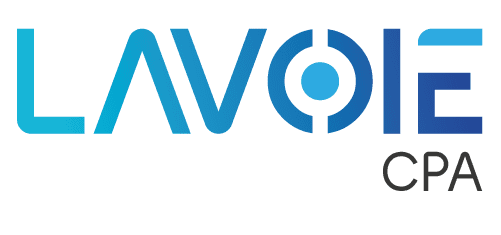
Chart of Accounts and Reporting Dimensions: Building a Solid Financial Foundation
As a growing business, you rely on up-to-date financial information to make strategic decisions, but without the right structure in place, even the most detailed numbers can feel like guesswork. If your Chart of Accounts is cluttered or your reporting lacks the depth you need, you’ll struggle to answer questions like “Which product line drives our margins?” or “How did that marketing campaign impact revenue by region?”
Fortunately, by thoughtfully designing your Chart of Accounts and layering on reporting dimensions, you can transform raw data into meaningful insights, creating a financial framework that grows with you.
1. The Role of Your Chart of Accounts
The Chart of Accounts is the structural framework that categorizes every transaction within your accounting system. An optimized CoA should:
- Group similar accounts: Avoid dozens of minor variations by consolidating them under clear categories (e.g., “Advertising and Marketing Expenses” rather than separate accounts for each campaign tool).
- Support consistency: Use clear naming conventions and numbering to ensure every team member records transactions uniformly.
- Reduce clutter: Revenue, expense, assets, and liability accounts should be aggregated as best as possible so that immaterial transactions are not standing alone in their own accounts.
- Design for permanence: Because accounts with activity can’t simply be deleted without affecting history, plan ahead for roll-ups and consolidations. When change is needed, deactivate the account and reclassify past entries to maintain historical integrity.
When your CoA is organized, analyzing financial results, especially when comparing to budgets and forecasts, should be seamless and efficient for reporting to management, investors, and third-party stakeholders.
2. Introducing Reporting Dimensions
Standard accounts tell you what happened; dimensions tell you where, why, and how much across multiple perspectives. Dimensions work like tags that can be attached to any transaction, such as:
- Department (e.g., Sales, R&D)
- Location (e.g., North America, EMEA)
- Project or Job (e.g., Project Alpha, Client Engagement)
- Product Line (e.g., Subscription, Professional Services)
These dimensions allow you to analyze the income statement, balance sheet, and cash flow data in countless ways, without adding to your CoA. High-quality accounting systems can handle multiple dimensions and provide tools for instantly reporting dimensional financial data.
Important: To keep reports comparable over time, make dimension coding mandatory for every transaction and keep the taxonomy intentionally simple (fewer, well-defined values reduce mis-coding and friction for users).
3. Key Benefits of Dimensions
Real-time visibility
Instantly view revenue and expense trends by any combination of dimensions.
Budget vs actual comparability / Transparent reporting
Forecast models should align with the accounting CoA so that analyzing and reporting variances is fast and efficient. For instance, budgets should compute payroll expense by department, which should align with the actual payroll expenses that are reported monthly from the accounting system. This alignment allows for effective analysis of variances.
Driver-based forecasting
Link key business drivers (like headcount or memberships) to dimensions, and build forecasts that align with the underlying assumptions.
Scenario analysis
Model “what-if” scenarios (for example, the impact of headcount changes in the Sales department and expected impact on revenue and cost of acquiring customers (CAC)) and see immediate impact of the forecast/ budget.
Scalability
Add new dimensions as your business grows, new products, regions, or programs, without overhauling your account structure.
4. Implementing Your CoA & Dimension Strategy
Step 1: Organize and Simplify Your CoA
- Review existing accounts: merge or retire duplicates.
- Use standardized account numbering (e.g., Assets 1000 – 1999, Liabilities 2000 – 2999).
- Include gaps in the numbers for future expansion of the chart of accounts when needed.
- Plan for change without breaking history: If you retire or consolidate accounts that already have posted activity, set them to inactive and reclassify historical transactions rather than deleting.
Step 2: Define Critical Dimensions
- Engage department heads to identify the 4–6 dimensions that drive strategic insight.
- Document tagging rules and default values to ensure consistency.
- Require coding on every transaction: Establish which dimensions are mandatory across transaction types; provide defaults where appropriate, and define QA checks to prevent un-coded entries.
Step 3: Configure Sage Intacct
- Enable selected dimensions in system settings.
- Designate required dimensions for specific transaction types and enforce posting controls so entries can’t be saved without the right codes.
- Train finance and operations teams on proper tagging procedures and ensure integrations also pass required dimension values.
Step 4: Build Dynamic Dashboards and Reports
- Use Sage Intacct’s Report Writer to create P&L and balance sheet views by dimension.
- Set up real-time dashboards in Intacct’s Home dashboard for executive visibility.
5. From Data to Decision-Making
Once configured, your CoA and dimensions become the backbone of strategic finance:
- Empower leaders with tailored reports by region, product, or project, without waiting for monthly close.
- Align budgets and actuals seamlessly, enabling proactive adjustments.
- Tell a compelling story around performance, backing every recommendation with precise, dimension-driven data.
6. Other Reminders
- COA decisions are durable. Once an account has posted transactions, it cannot be cleanly removed. If you need to retire or consolidate it, mark it inactive and reclassify historical transactions to preserve accurate reporting.
- Dimensions require discipline. When you introduce dimensions, every transaction must be coded with the required values. Keep the dimension set intentional and simple so coding stays consistent and reporting remains clear.
A well-structured Chart of Accounts combined with Sage Intacct’s reporting dimensions transforms raw numbers into actionable intelligence. By implementing this framework, you’ll accelerate close processes, deepen financial insights, and equip your organization to respond swiftly to change.

